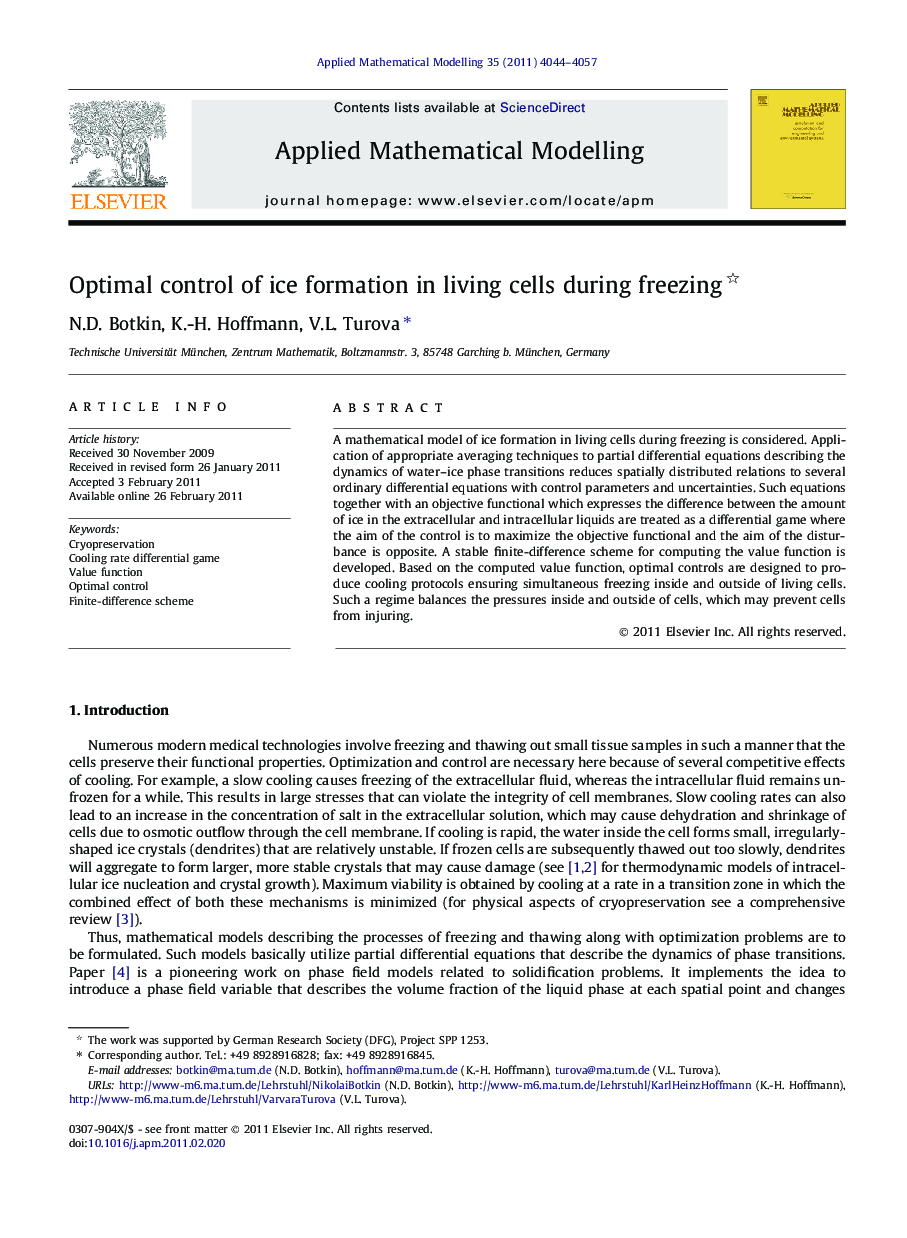| Article ID | Journal | Published Year | Pages | File Type |
|---|---|---|---|---|
| 1706401 | Applied Mathematical Modelling | 2011 | 14 Pages |
A mathematical model of ice formation in living cells during freezing is considered. Application of appropriate averaging techniques to partial differential equations describing the dynamics of water–ice phase transitions reduces spatially distributed relations to several ordinary differential equations with control parameters and uncertainties. Such equations together with an objective functional which expresses the difference between the amount of ice in the extracellular and intracellular liquids are treated as a differential game where the aim of the control is to maximize the objective functional and the aim of the disturbance is opposite. A stable finite-difference scheme for computing the value function is developed. Based on the computed value function, optimal controls are designed to produce cooling protocols ensuring simultaneous freezing inside and outside of living cells. Such a regime balances the pressures inside and outside of cells, which may prevent cells from injuring.
